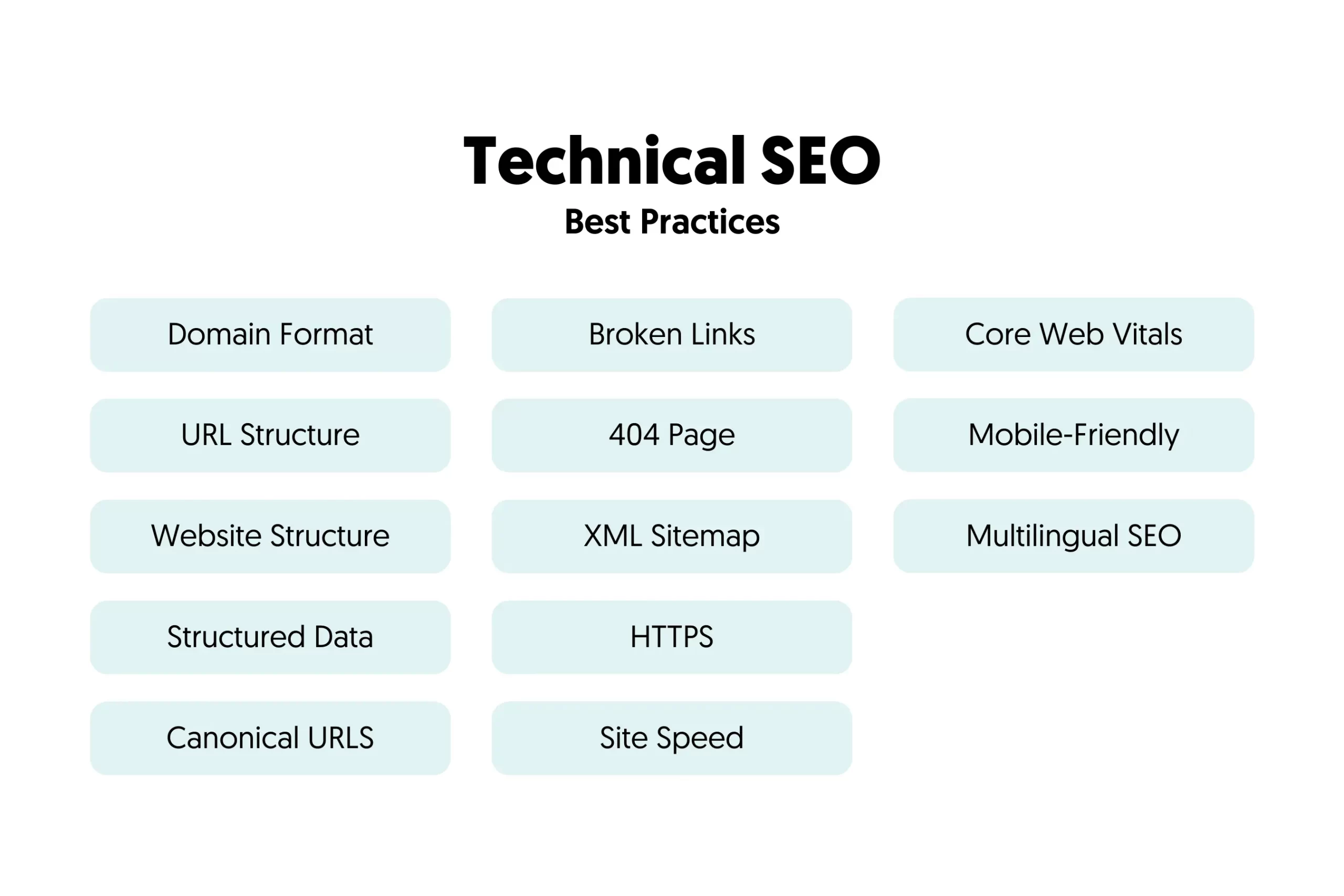- 1. Target Long-Tail Keywords
- 2. Publish More Relevant Content
- 3. Work On Technical SEO
- 4. Make Your Website Mobile Friendly And Fast
- 5. Optimize For On-Page SEO
- 6. Build High-Quality Backlinks
- 7. Promote Your Brand On Social Media
- 8. Start a Google Ads Campaign
- 9. Set Up a Google Business Profile
- 10. Leverage Video and Image SEO
- Learn More
A website with high search engine visibility is likelier to appear in the search results for related queries. This is not something that can be achieved overnight. It takes a lot of work to make your website stand out from the crowd, but with the right plan, you can get your share of the traffic.
1. Target Long-Tail Keywords
Be wise when choosing keywords to target with your content. Don’t always go after high-competition keywords; chances are you won’t be able to rank or get any traffic.
Instead, go after long-tail keywords that are easier to target. They have less search volume but also less competition, and this makes it more likely to be able to rank high for these terms.
Long-tail keywords make up 75% of searches, a percentage that certainly cannot be ignored.
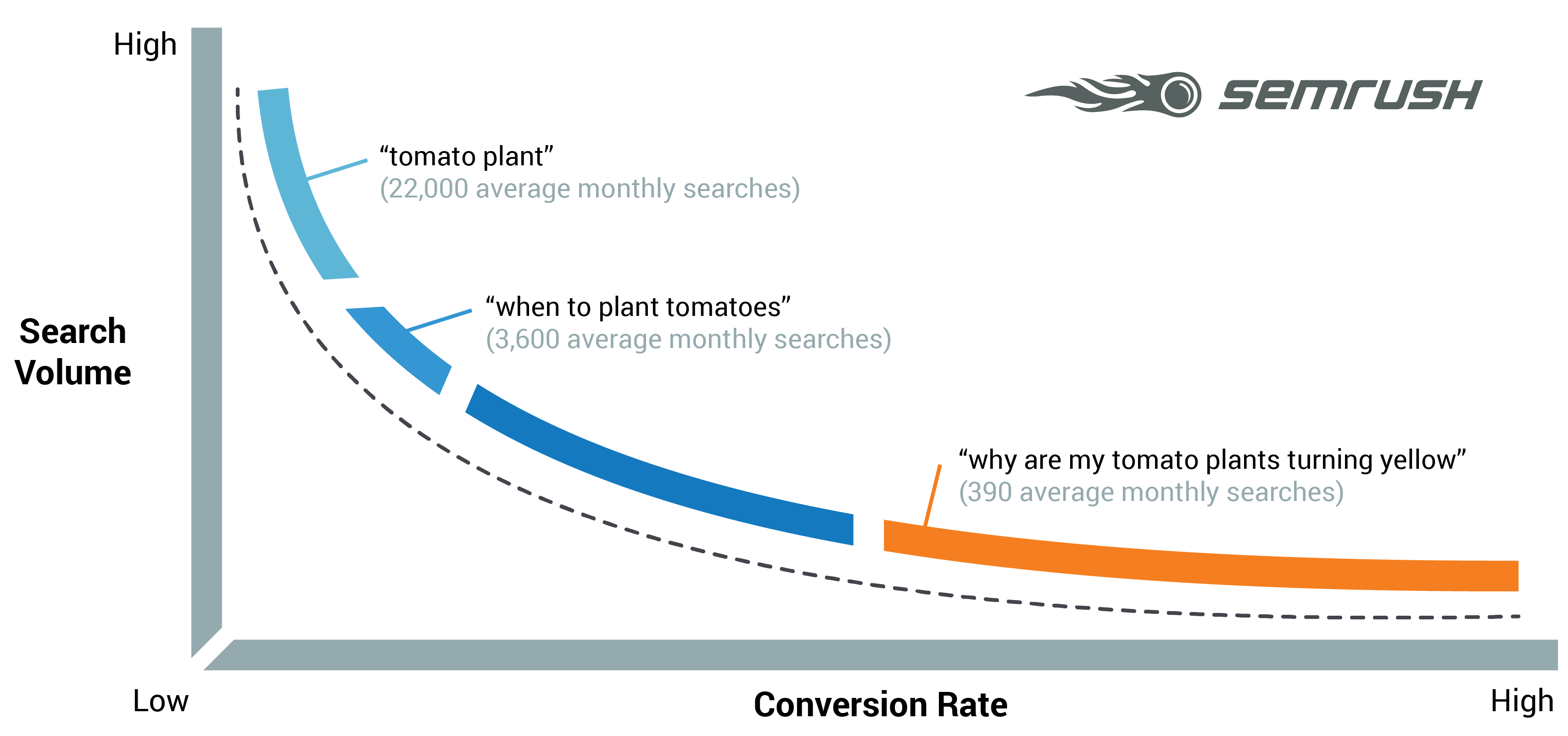
2. Publish More Relevant Content
Publishing high-quality, relevant content is one of the best ways to increase your website’s visibility on search engines. The more useful content you publish, the more chances you have to appear in search results and attract organic traffic.
Here’s how publishing more content helps you gain more exposure:
More Indexed Pages – Every new piece of content creates an opportunity for search crawlers to index another page from your site. More indexed pages mean more chances to rank for different keywords and appear in search results.
Increased Keyword Coverage – By covering a wide range of topics in your industry, you can rank for more search queries. Each article can target different long-tail keywords, helping you reach a broader audience.
Higher Authority in Your Niche – Websites that consistently publish valuable content tend to be seen as authoritative sources. The more helpful and well-researched content you provide, the more Google and users trust your site.
Better User Engagement – More content means more opportunities to keep visitors on your site. When users find multiple valuable articles, they are more likely to explore further, reducing bounce rates and increasing engagement signals that Google considers for rankings.

To achieve this, your content should be:
- Unique and Engaging – content that is not duplicated or similar to what is already published on the web and that satisfies the user intent.
- SEO Friendly - content that targets specific search terms and keywords that search engines can read and understand.
- Thorough and Well Written – High-quality content is comprehensive (studies show that the average length of a post on the first page of Google is 1800 words)
- Regularly Updated – no one, including search engines, wants to read outdated or irrelevant content.
By publishing new content regularly, search engine bots will visit your website more often, increasing your chances of ranking for the keywords you target.
3. Work On Technical SEO
Technical SEO ensures that search engines can properly crawl, index, and understand your website. Even the best content won’t rank well without a strong technical foundation.
One way to do this is through webmaster tools.
All major search engines have free tools for webmasters that can help them determine what search engines know about their websites and fix any errors.
You can use Google Search Console and Bing Webmaster Tools to:
Fix Crawling and Indexing Issues
- Identify and fix crawling errors (like 404 pages and server errors).
- Check for indexing issues and submit pages for indexing when needed.
- Monitor for any manual actions or security issues affecting your visibility.
Submit an XML Sitemap
An XML sitemap helps search engines find and understand your website’s structure. It lists all important pages so they can be indexed faster. Ensure your sitemap is:
- Up-to-date and includes all essential pages.
- Submitted to Google Search Console and Bing Webmaster Tools for better indexing.
Check Your Robots.txt File
Your robots.txt file tells search engines which pages they should or shouldn’t crawl. A misconfigured robots.txt file can prevent essential pages from being indexed. Check and update it regularly to avoid blocking key content.
4. Make Your Website Mobile Friendly And Fast
Go and check your Google Analytics reports, particularly the DEVICES report. It’s more than certain that you will see more users and pageviews from mobile devices than desktops.
This means two things:
1. You need a mobile-optimized website. Having a mobile-friendly website is no longer enough. Showing your content on mobile without horizontal scrollbars does not make a website mobile-optimized.
You must ensure that critical content is shown above the fold and that the user experience is not distracted by annoying popups or banners.
2. Your website must load as fast as possible, especially on mobile. Speed is a known SEO ranking factor and a known usability factor. Slow websites rank lower in mobile results and generate fewer conversions than faster websites.
What is considered a fast website? Google says a mobile website should load in less than 2.5 seconds.
From my experience, the only way to this number is to adopt the principles of SEO-friendly web design and develop for mobile first and then desktop.
This means that you should remove any visual elements that take time to load (e.g., large images or videos) or elements that are inappropriate for mobile, such as popups, non-responsive tables, and images with text.
In addition, you need a fast VPS server, the latest software, a CDN, and a good caching plugin.
5. Optimize For On-Page SEO
Before publishing a page, ensure it is fully optimized for on-page SEO to improve visibility and rankings. This involves strategically placing your target keyword and related terms in key areas of your content.
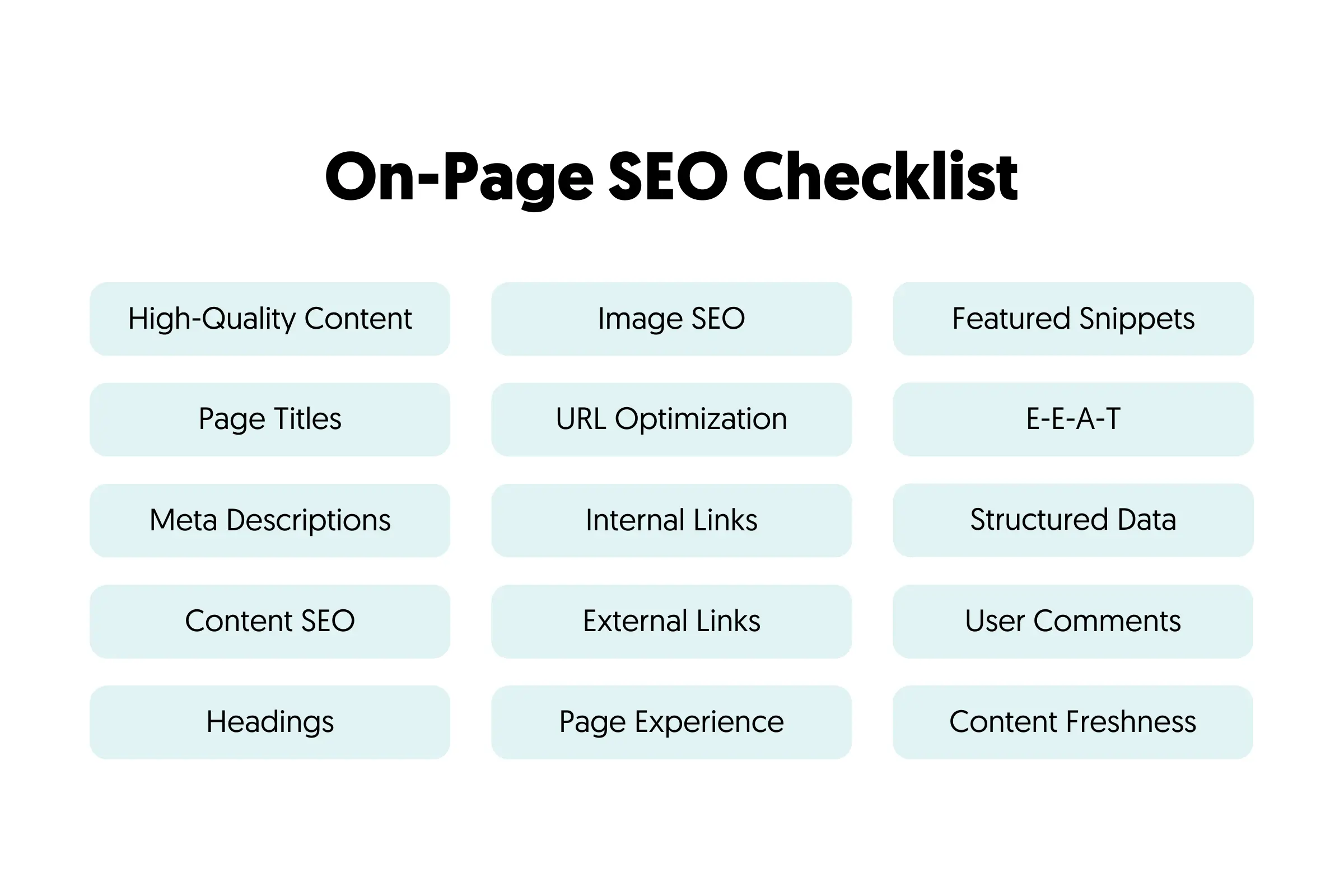
Here’s where you should include keywords:
- Page Title – Your title should be compelling, include your target keyword, and stay within 50-60 characters to avoid truncation in search results.
- Headings (H1, H2, H3, etc.) – Use headings to structure your content and naturally incorporate keywords. This helps both users and search engines understand the topic.
- Meta Description – Write a clear and engaging meta description (under 160 characters) that includes your keyword and encourages clicks.
- Page Content – Naturally integrate keywords throughout your content, focusing on relevance rather than repetition.
Avoid keyword stuffing, as it can harm your rankings. Instead, write naturally and ensure your content provides real value to users. Additionally, use internal links to guide visitors to other important pages on your site, improving both user experience and SEO.
Another element to optimize your content for is rich snippets and featured snippets. These can significantly increase your click-through rate (CTR) and drive more organic traffic.
These enhanced search results give users immediate answers, making them more likely to click on your page. To optimize for rich results:
Implement Schema Markup – Structured data helps search engines understand your content better. You can add schema for:
- Articles and blog posts
- Reviews and ratings
- FAQs
- Products and pricing information
Use Clear, Structured Content – Organize your content with bullet points, numbered lists, and concise answers to common questions. Google often pulls featured snippets from well-structured content.
Check Google’s Search Gallery – Explore Google’s Search Gallery to see all available rich results and implement those relevant to your content.
6. Build High-Quality Backlinks
Backlinks are one of the strongest signals search engines use to determine a website’s credibility and authority. Think of them as digital endorsements—when reputable sites link to yours, search engines see it as a vote of confidence, which can boost your rankings and visibility.
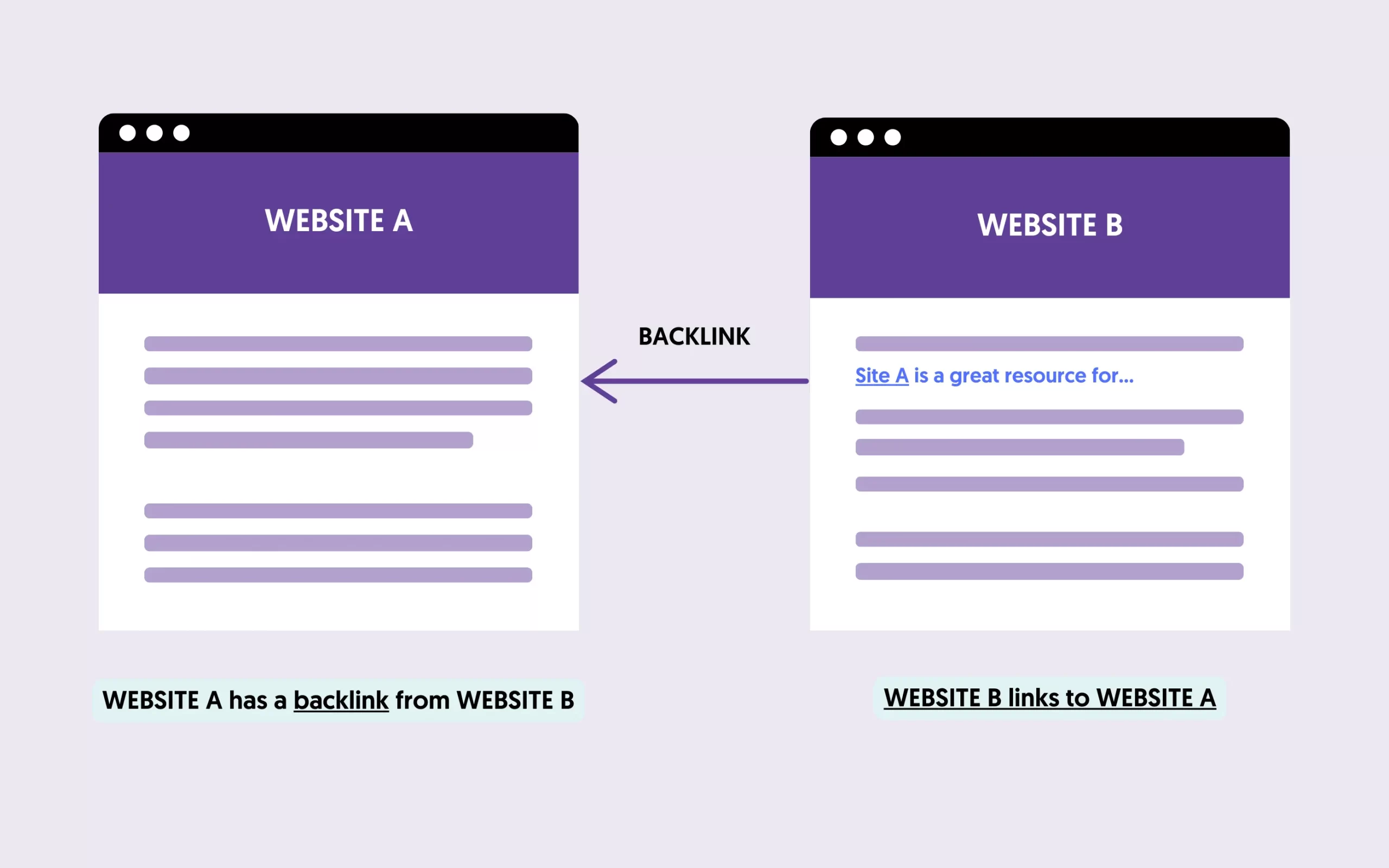
But not all backlinks are created equal. Here’s how high-quality backlinks can help your website gain more exposure on search engines:
They Expand Your Reach Beyond Organic Results - A backlink from a high-traffic website doesn’t just help with rankings, it also brings direct referral traffic. If a well-respected blog or news site links to your content, their audience is likelier to click through, giving you exposure to a whole new group of potential visitors.
They Signal Trust and Authority - Google’s algorithm evaluates backlinks like academic citations. The more quality sites link to your content, the more authoritative your website appears. If industry leaders and trusted sources link to you, Google will rank your pages higher.
They Help Search Engines Discover Your Content Faster - Websites with strong backlink profiles get crawled more frequently. If an authoritative site links to your new content, search engine bots will likely follow that link, indexing your page faster and improving its chances of ranking sooner.
They Strengthen Your Topical Authority - Google aims to rank websites demonstrating expertise in a particular subject. If multiple reputable sources in your niche consistently link to your content, Google recognizes your site as an authority in that topic, increasing the likelihood of ranking for related keywords.
The Key to Effective Link Building: Earn, Don’t Beg
The best backlinks are those you earn naturally by creating content people want to link to. Instead of chasing low-quality links, focus on:
- Publishing unique research, data, or case studies.
- Writing in-depth guides that become go-to resources in your industry.
- Building relationships with influencers, bloggers, and journalists.
7. Promote Your Brand On Social Media
One way to increase your website’s visibility in search results is to get noticed by other sites and people.
Besides incoming links, another factor is people talking about your brand in online forums and social media networks.
Although links from social media pages (and most forums) don’t directly influence your rankings (because they are nofollow), they have an indirect effect.
Google can pick up these signals and improve a website's rankings if it has enough data to justify that this is what people like to see in the search results.
For example, if you publish a post that goes viral on social media, its rankings will improve much faster because search engines know it’s a piece of content that users like.
8. Start a Google Ads Campaign
Besides organic SEO, another way to get your website to show up in search results is through paid ads. Google Ads allows you to place your website at the top of search engine results pages (SERPs), instantly increasing visibility for targeted keywords.

Search Engine Marketing (SEM) involves using Google Search Ads, which appear above organic results when users search for specific keywords. These ads help businesses reach potential customers at the exact moment they are looking for a product or service.
Unlike SEO, which takes time to build rankings, SEM provides instant visibility, making it a great strategy for new websites or competitive industries.
Google Ads works on a pay-per-click (PPC) model, meaning you only pay when someone clicks on your ad. This allows you to control your budget and target the right audience based on location, device, and even user behavior.
By combining SEM with your organic SEO strategy, you can dominate the search results, ensuring your website gets maximum exposure on Google.
9. Set Up a Google Business Profile
If you want your business to appear in local search results and on Google Maps, setting up a Google Business Profile (GBP) is essential. A well-optimized GBP increases your chances of showing up in local searches, especially when users search for businesses “near me.”
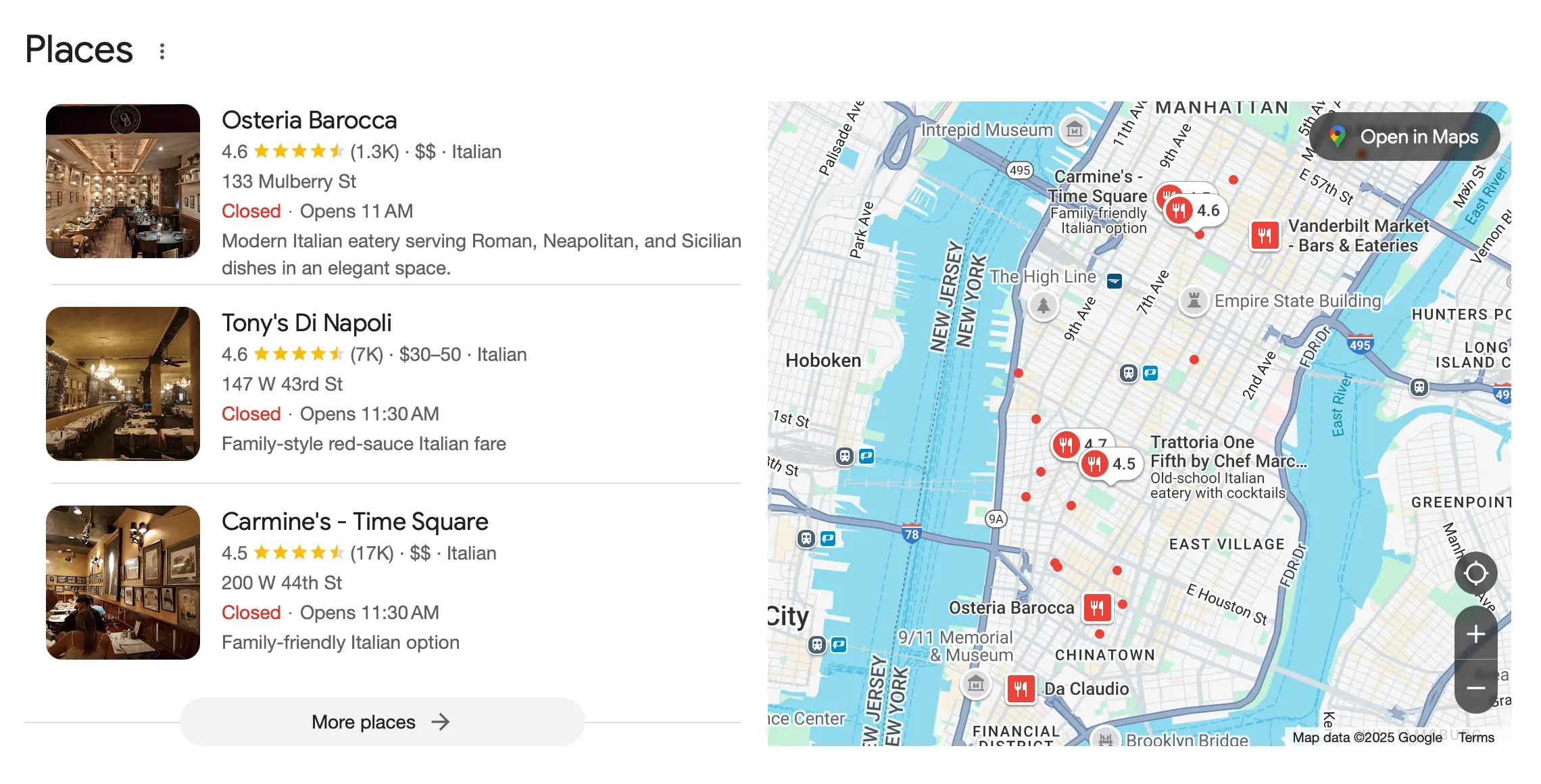
When you create a GBP, your business can appear in the Google Local Pack, a set of map-based listings at the top of search results. This visibility is crucial for attracting local customers, and it provides essential details like your address, phone number, website, and business hours.
Users can also see customer reviews, which build trust and influence purchasing decisions.
Beyond search rankings, a GBP allows businesses to engage with customers by posting updates, responding to reviews, and answering questions directly. It also provides valuable insights into how people find your business and what actions they take, helping you refine your local SEO strategy.
By optimizing your GBP, you improve your online presence and make it easier for potential customers to find and connect with your business.
10. Leverage Video and Image SEO
Optimizing videos and images is a powerful way to increase your website’s visibility on Google Search, YouTube, and Google Images.
Videos, especially those hosted on YouTube (which Google owns), can rank in search results alongside web pages. By optimizing video titles, descriptions, and transcripts with relevant keywords, you can improve their chances of appearing for relevant searches.
Embedding videos on your site can also increase dwell time, a ranking factor that signals valuable content to Google.
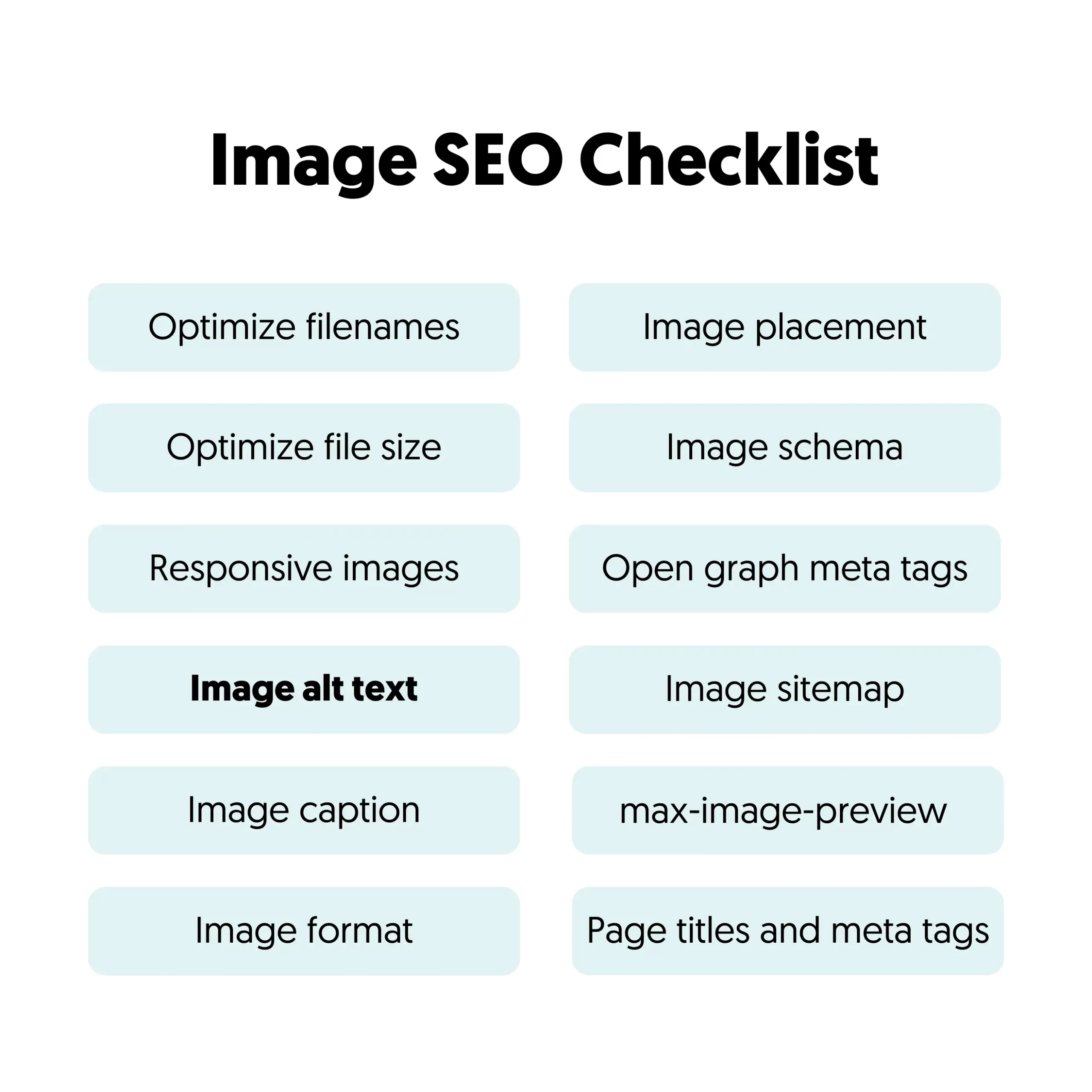
Similarly, image SEO helps your visuals appear in Google Images and featured snippets. To optimize images, use descriptive file names, alt text, and structured data.

